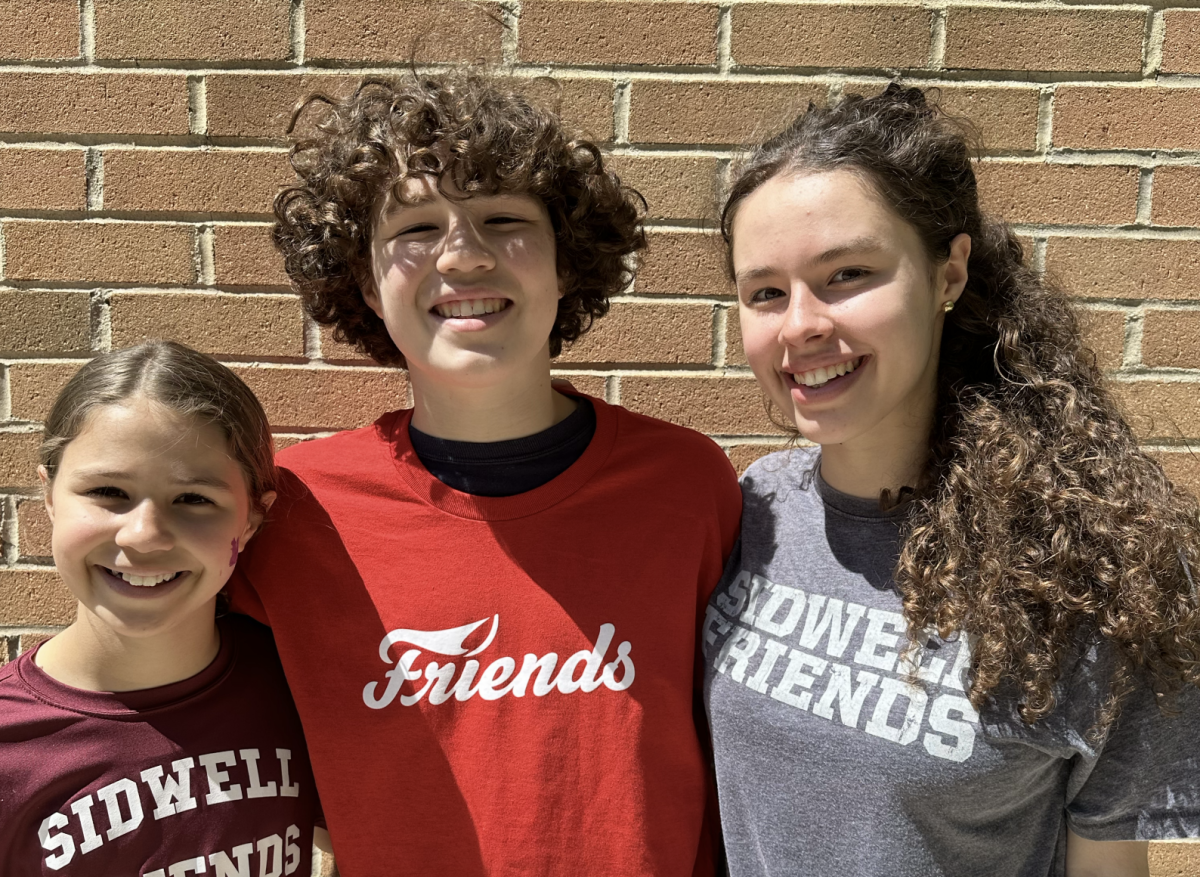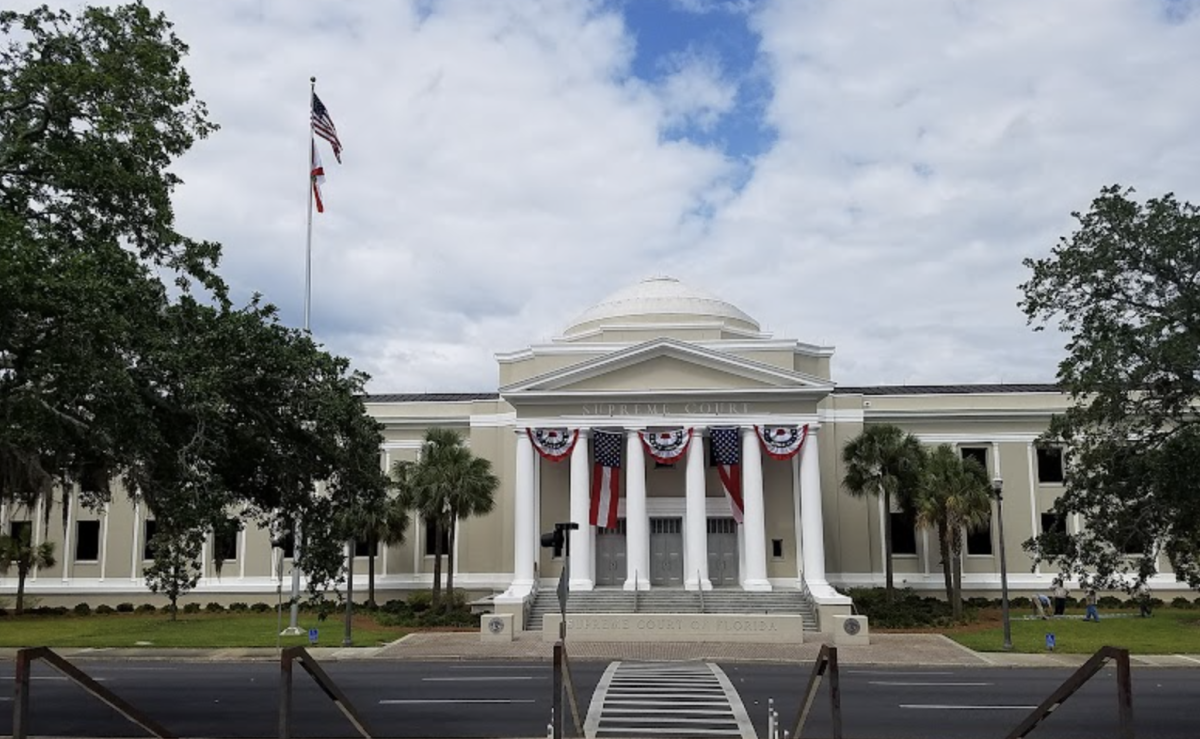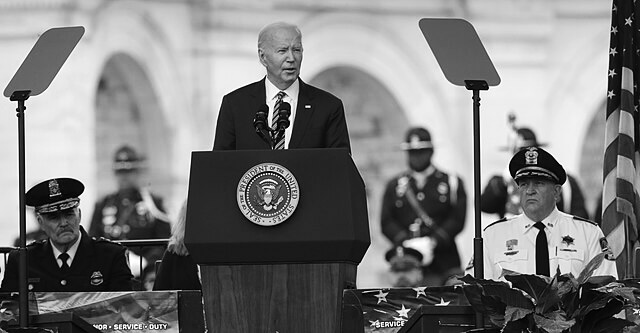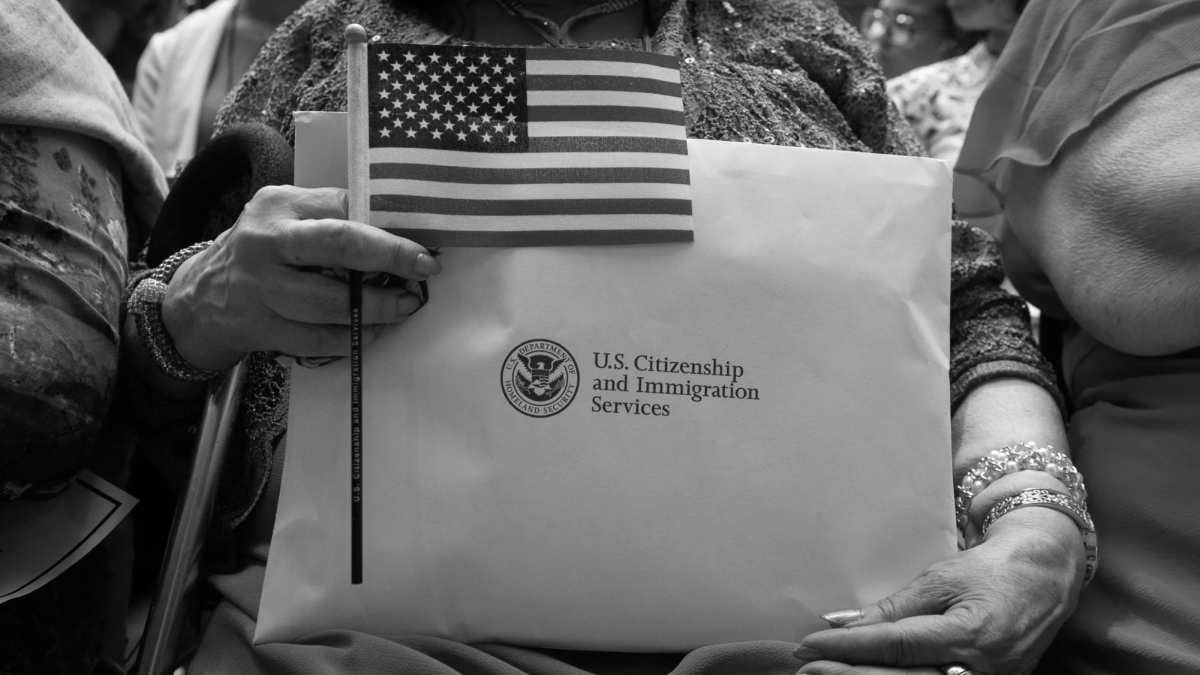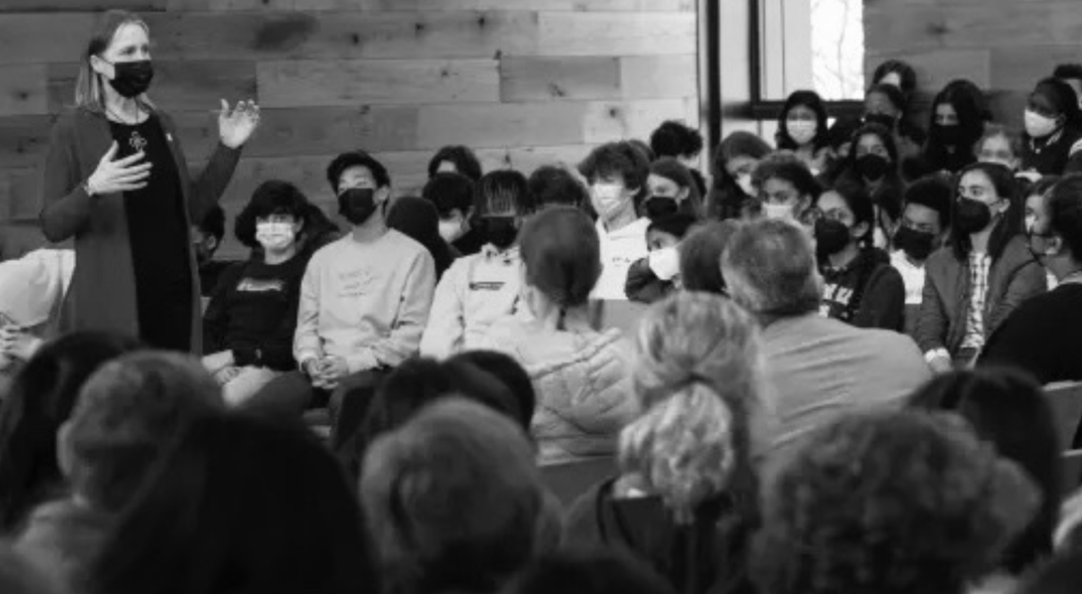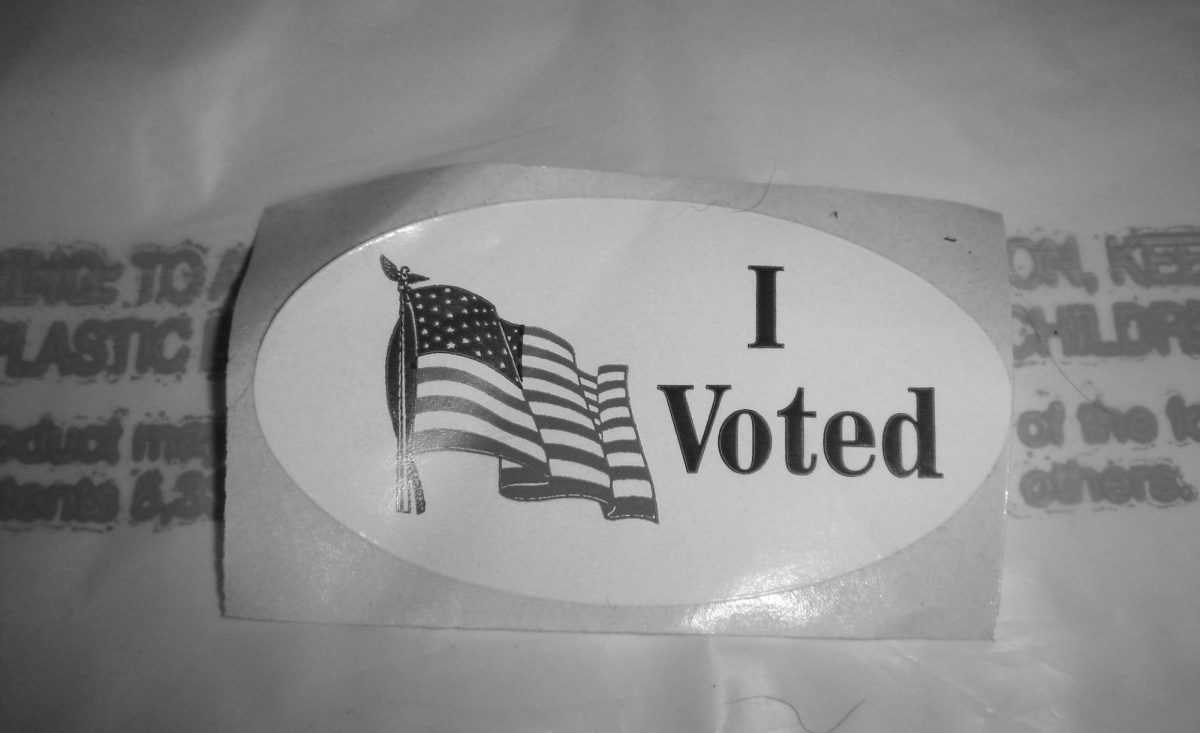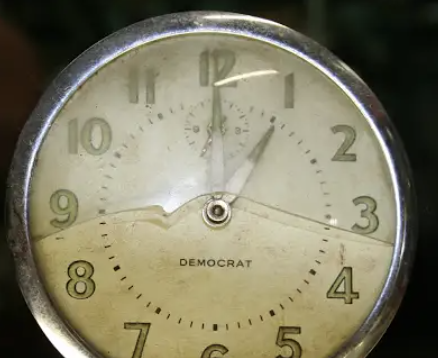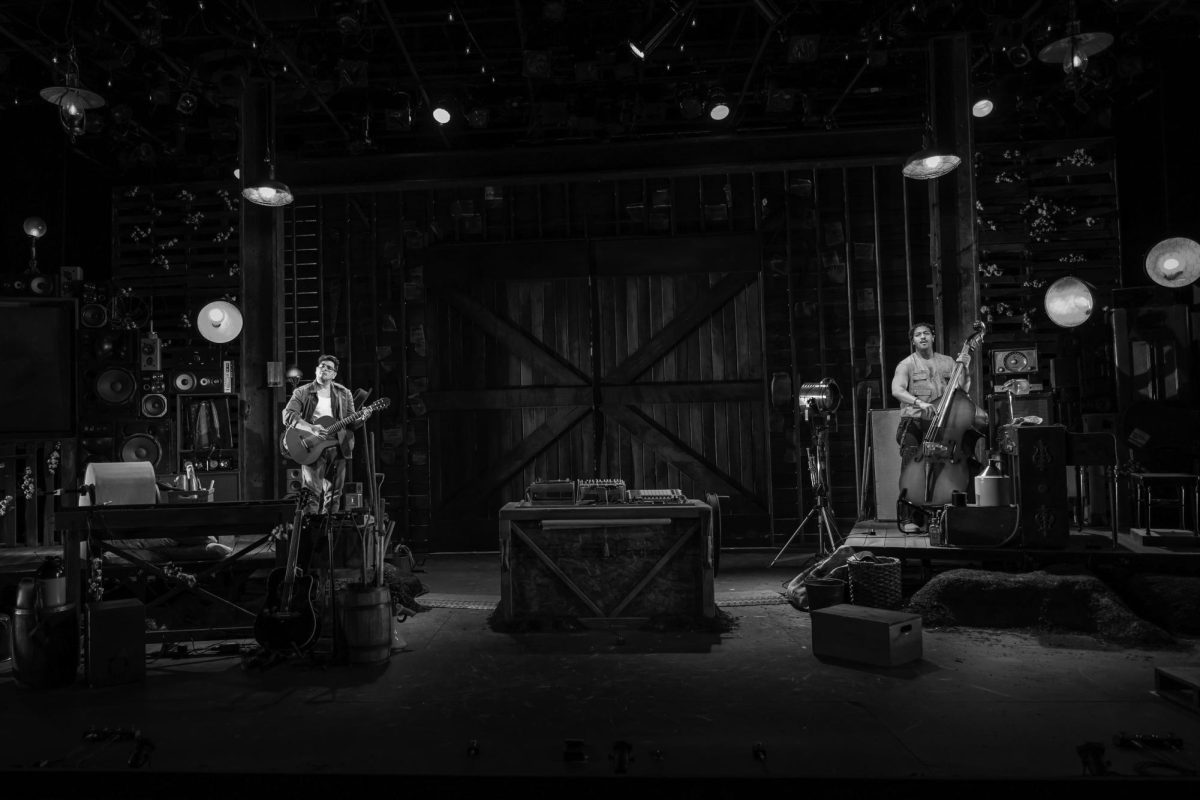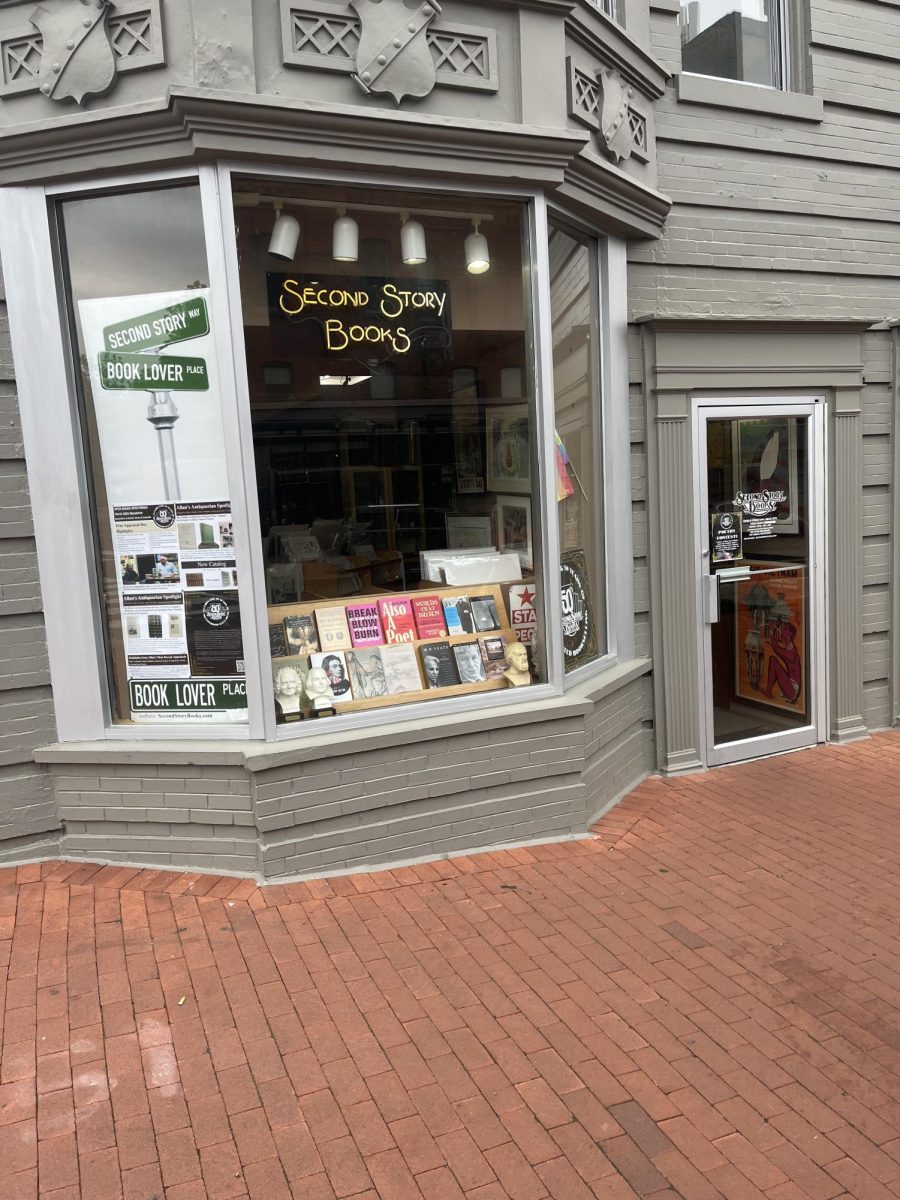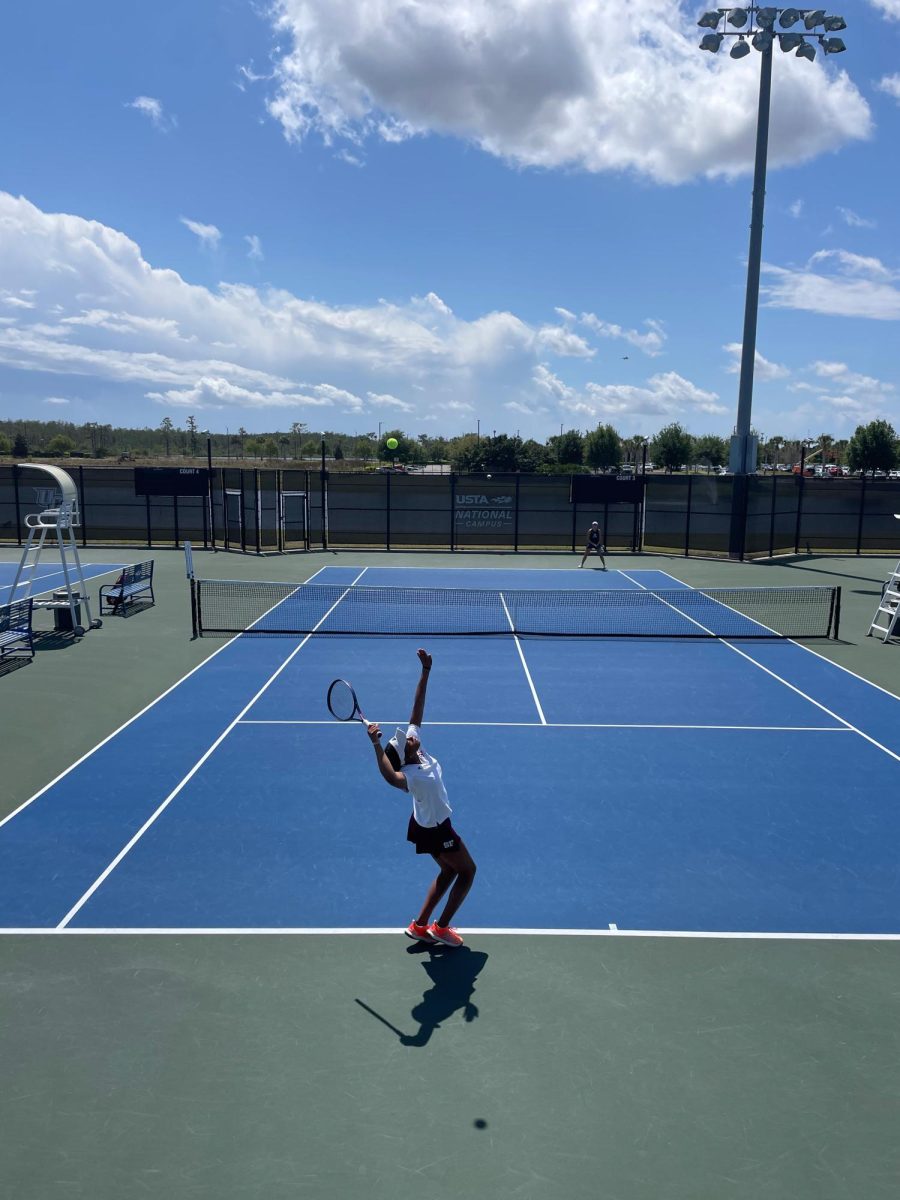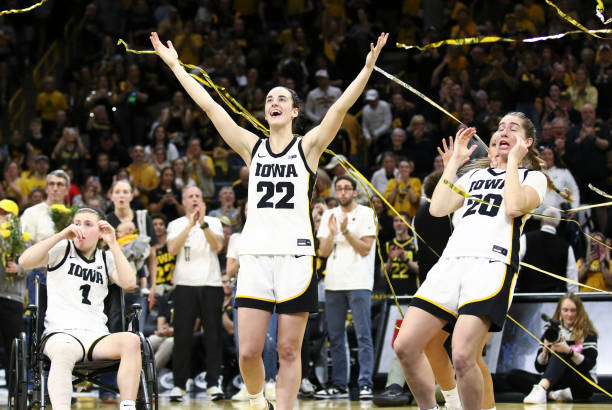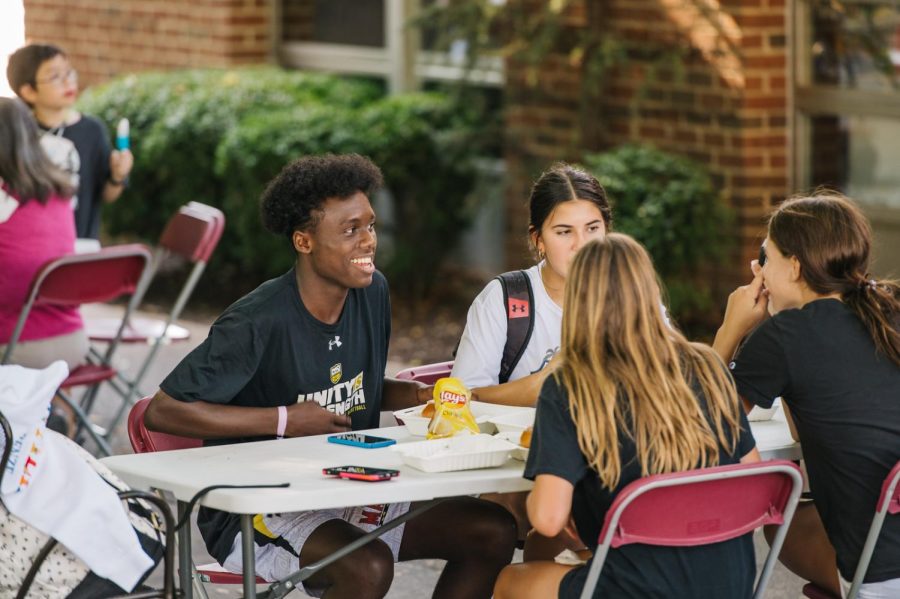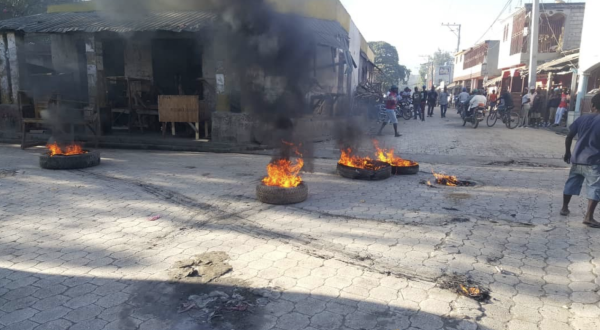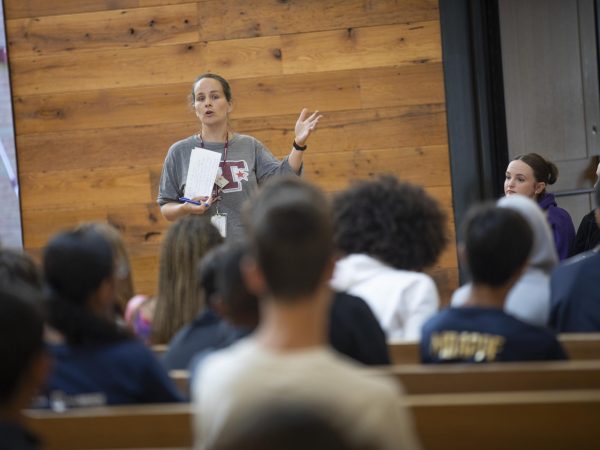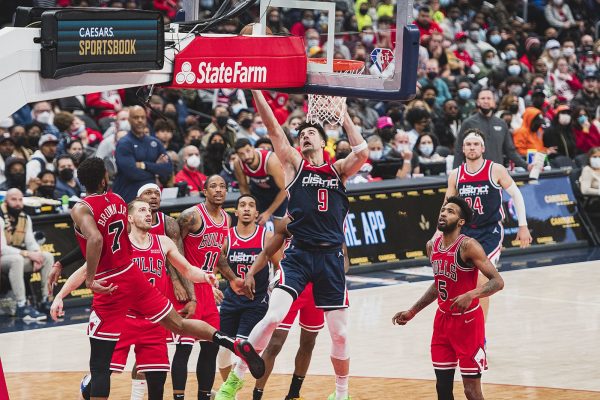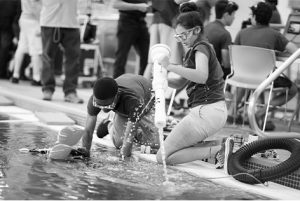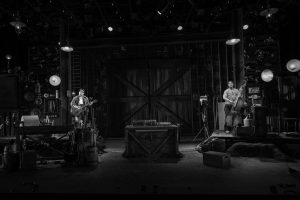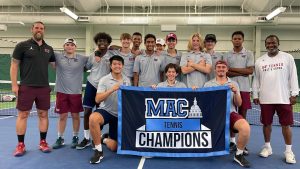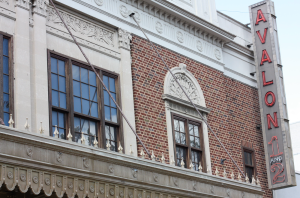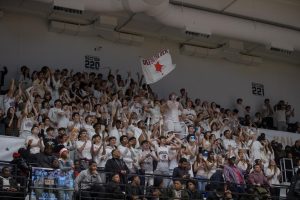Lunch Period Should Be Changed To Prevent Crowding and Wait Times
Limited seating in Sidwell’s cafeteria is an issue for many students and faculty. There is not enough room for the approximately 500 Upper School students to sit in the cafeteria at once. This leads to crowded tables and long lines of people waiting to receive their food, especially on short lunch block days. Although warmer weather has led to a decrease in chaos and crowding due to more students eating outside, permanent, year-round solutions should be implemented. By adding seating options and allotting different lunch times, the cafeteria can run more efficiently.
A large issue with lunch periods is that the lines to get food are extremely long and time-consuming. This is because there are only three tables holding the main course of the day. The other main attractions of the cafeteria are the rice and soup, which are only given two serving places each. By adding more trays which hold the hot food of the day, congestion in the current three-table system could decrease. Even one table of these trays would help spread students out and improve lunch blocks. Another solution to this issue would be the addition of another place to serve food. If there were two places where students could get the same lunch, there would be much less traffic, and students could receive their food faster.
On Tuesdays, Wednesdays and Thursdays, lunch is less chaotic, as some students are released at 11:30 a.m., while others have long periods which last until 11:55 a.m. This allows students with shorter blocks to eat and exit the cafeteria before others even finish their classes. To make lunch run even smoother on these days, there could be a time limit in the cafeteria for students with short periods. If those students arrive at 11:30 a.m., they could eat until around 12 p.m., when students with the long block begin to arrive. Many students remain in the cafeteria to continue socializing with their friends, which could be done elsewhere to avoid crowding. Staff could make an announcement to ask those students to begin to leave in order to make room at tables for their classmates arriving from class.
Another solution to the crowding in the cafeteria, although more complicated, is to open new times when students could get their lunch. The cafeteria could open for students who have free periods before and after lunch in order to increase the amount of time students could eat at the tables. Sidwell could also create multiple shorter assigned lunch periods during the general time when lunch is served. This solution would change many people’s schedules and could be difficult to implement but would be very effective in solving the crowding problem. These changes may also conflict with Middle School lunch times.
Despite a few minor issues with organization and efficiency in the cafeteria, the lunch block provides ample time for students to eat and relax during the middle of the day. With some changes, lunch could be even more enjoyable and coordinated.
Your donation will support the student journalists of Sidwell Friends School. Your contribution will allow us to purchase equipment and cover our annual website hosting costs.





